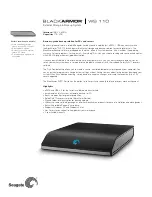
233
Cataloging
Chapter 21 Cataloging basics
This chapter provides a brief introduction to the Cataloging module and MARC
records. You'll also find instructions for customizing the Cataloging toolbar,
setting up security, searching different databases for the records you want, and
adding, deleting, or printing out MARC records.
Cataloging 101
Cataloging helps you maintain your library materials database. From Cataloging,
you can add and update individual MARC records and access the global and
PHD maintenance features. You also use Cataloging to import and export MARC
records.
Your library database can contain two types of MARC records: bibliographic and
authority. Each type of MARC record has a very specific role.
A bibliographic record represents a physical item in your library's collection. In
addition to the title, author, and subjects, a bibliographic record also describes the
item and contains information about each copy of the item (for example, call
number, price, and acquisition date).
An authority record contains the preferred form of names, uniform titles, series
titles, and subject headings. It may also contain variant, unauthorized, or related
headings, and a list of sources consulted in the process of deciding upon the
authorized heading and its variant and related forms. Cataloging uses authority
records to create crossreferences that help patrons achieve success in searching.
Using MARC bibliographic and authority record formats
Today, many new books come with MARC records that you can import (see
Chapter 25, Importing MARC records"). But that won't work for donated books,
audiovisual equipment, or items that have been on your shelves for years. In the
cases where you have to create your own MARC records, you'll want them to be
usable and contain the needed information.
Cataloging provides you with two options for adding and editing bibliographic
records: the Easy Editor and the MARC Editor.
The Easy Editor lets users with little or no knowledge of the MARC standard
perform routine cataloging tasks. In the Easy Editor, simple prompts identify the
information needed to catalog a title. The MARC Editor lets more advanced users
take full advantage of the detail and flexibility of the MARC standard for both
bibliographic and authority records.
Note:
Although you selected a preferred editor in System Setup, both editors are
always available from Cataloging's File menu (see Setting up
miscellaneous Cataloging options" on page 55).
Summary of Contents for VERSION 6.00
Page 8: ...8 04 04 Notes...
Page 60: ...04 04 60 System Setup Notes...
Page 68: ...04 04 68 System Setup Notes...
Page 114: ...04 04 114 System Setup Notes...
Page 146: ...04 04 146 Circulation Desk Notes...
Page 216: ...04 04 216 Inventory Notes...
Page 254: ...04 04 254 Cataloging Notes...
Page 322: ...04 04 322 Cataloging Notes...
Page 370: ...04 04 370 Cataloging Notes...
Page 394: ...04 04 394 Alliance Plus Notes...
Page 402: ...04 04 402 Alliance Plus Notes...
Page 430: ...04 04 430 Search Stations Notes...
Page 498: ...04 04 498 Reports Notes...
Page 590: ...04 04 590 Reports Notes...
Page 642: ...04 04 642 Appendices Notes...
Page 698: ...04 04 698 Appendices Notes...
Page 726: ...04 04 726 Index...
Page 728: ......
Page 729: ......
















































